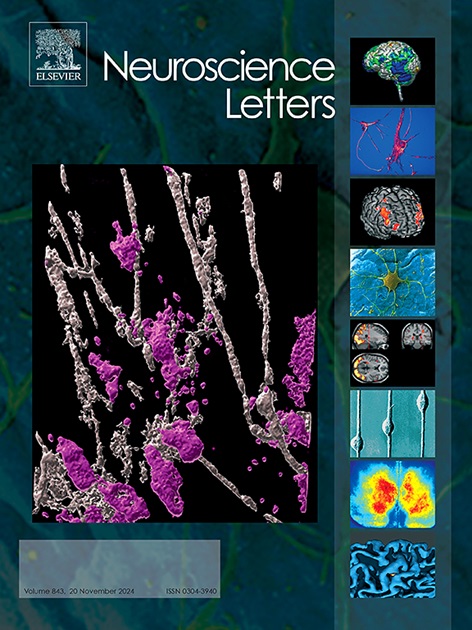CRMP2及其磷酸化可防止皮质脊髓束轴突错路
IF 2
4区 医学
Q3 NEUROSCIENCES
引用次数: 0
摘要
在中枢神经系统(CNS)的发育过程中,皮质脊髓束(CST)等神经回路的形成对控制自主运动至关重要,并受轴突引导机制的调控。在这项研究中,我们研究了CRMP2(坍缩反应介质蛋白2)在CST形成中的作用。CRMP2结合肌动蛋白和微管控制细胞骨架,是一种磷酸化蛋白,其活性取决于其磷酸化状态。为了抑制细胞周期蛋白依赖性激酶5 (Cdk5)的磷酸化,产生CRMP2敲入(crmp2ki/ki)小鼠,其中522位的丝氨酸残基被丙氨酸取代。我们的研究结果表明,CRMP2敲除(CRMP2 -/-)和crmp2ki/ki小鼠都比野生型(WT)小鼠表现出更高的CST轴突错误越过中线的百分比。然而,在缺乏与CRMP2高度同源的CRMP1的小鼠中,很少有轴突越过中线,与WT小鼠相似。此外,crmp2-/-和crmp2ki/ki小鼠的独立前肢运动比例下降。这些发现强调CRMP2及其磷酸化是小鼠中枢神经系统中CST形成的必要条件。本文章由计算机程序翻译,如有差异,请以英文原文为准。
CRMP2 and its phosphorylation prevent axonal misrouting of the corticospinal tract
During the development of the central nervous system (CNS), the formation of neural circuits such as the corticospinal tract (CST) is crucial to control voluntary movement and is regulated by axonal guidance mechanisms.
In this study, we examined the role of CRMP2 (Collapsin response mediator protein 2) in the formation of CST. CRMP2, which binds to actin and microtubules to control the cytoskeleton, is a phosphoprotein whose activity depends on its phosphorylated state. To inhibit Cyclin-dependent kinase 5 (Cdk5) phosphorylation, CRMP2 knock-in (crmp2ki/ki) mice were generated in which the serine residue at position 522 was replaced with alanine. Our results showed that both CRMP2 knock-out (crmp2-/-) and crmp2ki/ki mice exhibited higher percentages of CST axons that crossed the midline erroneously than wild-type (WT) mice. However, in mice lacking CRMP1, which is highly homologous to CRMP2, few axons crossed the midline, similar to WT mice. Additionally, crmp2-/- and crmp2ki/ki mice showed decreased proportions of independent forelimb movements. These findings emphasize that CRMP2 and its phosphorylation are necessary for proper CST formation in the mouse CNS.
求助全文
通过发布文献求助,成功后即可免费获取论文全文。
去求助
来源期刊

Neuroscience Letters
医学-神经科学
CiteScore
5.20
自引率
0.00%
发文量
408
审稿时长
50 days
期刊介绍:
Neuroscience Letters is devoted to the rapid publication of short, high-quality papers of interest to the broad community of neuroscientists. Only papers which will make a significant addition to the literature in the field will be published. Papers in all areas of neuroscience - molecular, cellular, developmental, systems, behavioral and cognitive, as well as computational - will be considered for publication. Submission of laboratory investigations that shed light on disease mechanisms is encouraged. Special Issues, edited by Guest Editors to cover new and rapidly-moving areas, will include invited mini-reviews. Occasional mini-reviews in especially timely areas will be considered for publication, without invitation, outside of Special Issues; these un-solicited mini-reviews can be submitted without invitation but must be of very high quality. Clinical studies will also be published if they provide new information about organization or actions of the nervous system, or provide new insights into the neurobiology of disease. NSL does not publish case reports.
 求助内容:
求助内容: 应助结果提醒方式:
应助结果提醒方式:


